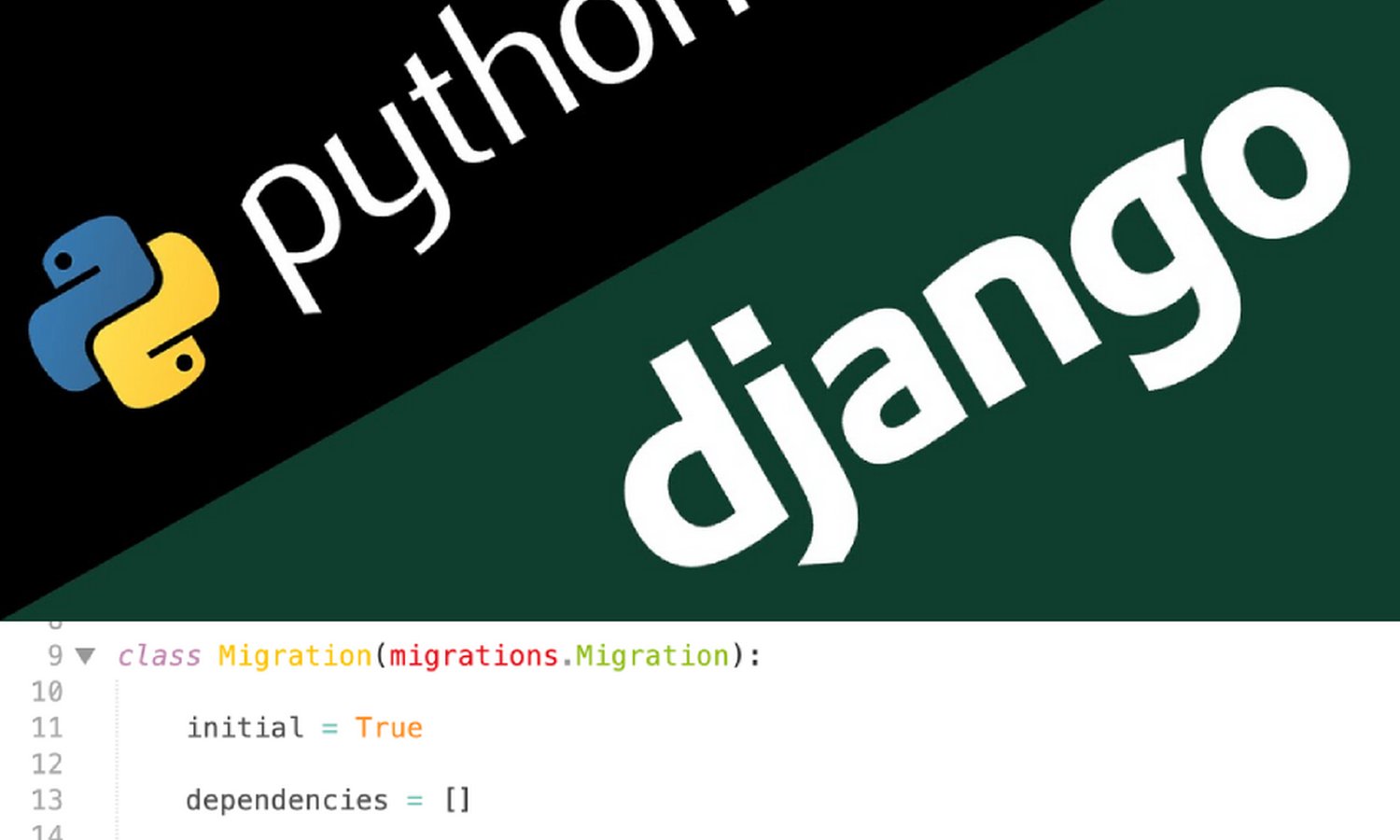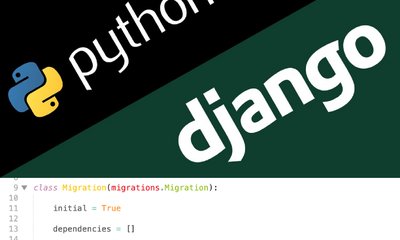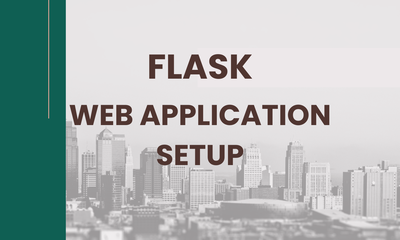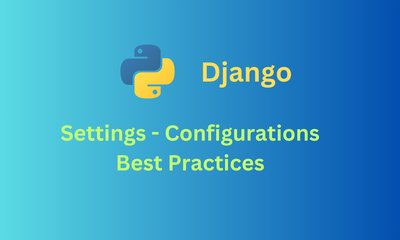Di chuyển Django: Vấn đề, thách thức, giải pháp và các thực tiễn tốt nhất
By khoanc, at: 10:34 Ngày 11 tháng 5 năm 2023
Thời gian đọc ước tính: __READING_TIME__ phút


Hệ thống di cư của Django là một công cụ cần thiết để quản lý các thay đổi đối với lược đồ cơ sở dữ liệu của ứng dụng theo thời gian. Tuy nhiên, giống như bất kỳ hệ thống phức tạp nào, cũng có những vấn đề và thách thức mà các nhà phát triển có thể gặp phải khi làm việc với di cư. Trong bài viết này, chúng ta sẽ thảo luận về một số vấn đề và thách thức phổ biến nhất với di cư Django, cũng như các giải pháp và thực tiễn tốt nhất để khắc phục chúng.
Vấn đề/Thách thức 1: Thời gian di cư dài
Một vấn đề phổ biến với di cư Django là thời gian di cư dài. Điều này có thể là kết quả của một số yếu tố, bao gồm các bảng lớn, di cư dữ liệu phức tạp và phần cứng chậm.
Giải pháp 1: Tách di cư thành các phần nhỏ hơn
Một giải pháp hiệu quả là phân tách các di cư lớn thành các phần nhỏ hơn, dễ quản lý hơn. Thay vì một tệp di cư khổng lồ, hãy chia các thay đổi thành nhiều di cư nhỏ hơn có thể được thực thi tuần tự. Điều này cho phép thực thi nhanh hơn các di cư riêng lẻ, làm cho toàn bộ quy trình hiệu quả hơn.
Ưu điểm:
- Các di cư nhỏ hơn có thể được thực thi nhanh hơn, giảm thời gian di cư tổng thể.
- Dễ dàng khắc phục sự cố và gỡ lỗi nếu chúng phát sinh trong quá trình di cư.
Nhược điểm:
- Việc phân tách các di cư làm tăng thêm độ phức tạp cho chiến lược di cư của bạn.
- Yêu cầu lập kế hoạch và phối hợp cẩn thận để đảm bảo thứ tự thực thi chính xác.
Giải pháp 2: Tối ưu hóa truy vấn và hoạt động cơ sở dữ liệu
Trong một số trường hợp, thời gian di cư dài có thể là do các truy vấn hoặc hoạt động cơ sở dữ liệu không hiệu quả hoặc sử dụng nhiều tài nguyên trong các tập lệnh di cư. Phân tích và tối ưu hóa các truy vấn này có thể cải thiện đáng kể hiệu suất di cư.
Dưới đây là một vài kỹ thuật cần xem xét:
- Tối ưu hóa chỉ mục: Đảm bảo rằng các cột cơ sở dữ liệu có liên quan có các chỉ mục phù hợp để tăng tốc độ thực thi truy vấn.
- Xử lý hàng loạt: Nếu bạn đang thực hiện các hoạt động dữ liệu hàng loạt, hãy xem xét sử dụng các kỹ thuật xử lý hàng loạt hoặc sử dụng các phương thức
bulk_create()vàupdate()của Django để giảm thiểu các lần truy cập cơ sở dữ liệu.
- Giảm thiểu thao tác dữ liệu: Cố gắng giảm thiểu các thao tác dữ liệu phức tạp trong quá trình di cư. Nếu có thể, hãy di chuyển các thao tác dữ liệu sang các di cư dữ liệu riêng biệt hoặc thực hiện chúng bên ngoài quy trình di cư.
Ưu điểm:
- Các truy vấn và hoạt động được tối ưu hóa có thể làm giảm đáng kể thời gian di cư.
- Hiệu suất và hiệu quả tổng thể của cơ sở dữ liệu được cải thiện trong quá trình di cư.
Nhược điểm:
- Yêu cầu phân tích và tối ưu hóa cẩn thận các truy vấn và hoạt động cơ sở dữ liệu.
- Có thể yêu cầu kiến thức và hiểu biết bổ sung về các kỹ thuật tối ưu hóa cơ sở dữ liệu.
Vấn đề/Thách thức 2: Mất dữ liệu
Một thách thức phổ biến khác với di cư Django là khả năng mất dữ liệu trong quá trình thay đổi lược đồ. Điều này có thể xảy ra khi các trường hoặc bảng bị xóa hoặc đổi tên, dẫn đến mất dữ liệu.
Giải pháp 1: Sử dụng di cư dữ liệu
Một giải pháp để ngăn chặn mất dữ liệu trong quá trình di cư là sử dụng di cư dữ liệu. Di cư dữ liệu cho phép bạn viết mã Python để di chuyển dữ liệu trong cơ sở dữ liệu, bao gồm cập nhật trường, thêm dữ liệu mới hoặc xóa dữ liệu khi cần.
Ưu điểm: Di cư dữ liệu cho phép bạn thực hiện các hoạt động dữ liệu phức tạp trong quá trình di cư và ngăn ngừa mất dữ liệu.
Nhược điểm: Di cư dữ liệu yêu cầu lập kế hoạch và thử nghiệm bổ sung để đảm bảo rằng chúng không gây ra các vấn đề mới.
Giải pháp 2: Tạo bản sao lưu dữ liệu
Trước khi chạy bất kỳ di cư nào liên quan đến thay đổi dữ liệu, điều cần thiết là tạo bản sao lưu cơ sở dữ liệu của bạn. Bản sao lưu này đóng vai trò như một mạng lưới an toàn trong trường hợp bất cứ điều gì xảy ra sai trong quá trình di cư. Nếu mất dữ liệu xảy ra, bạn có thể khôi phục bản sao lưu để khôi phục dữ liệu bị mất.
Ưu điểm:
- Cung cấp một tùy chọn dự phòng đáng tin cậy trong trường hợp mất dữ liệu.
- Cho phép khôi phục nhanh chóng dữ liệu về trạng thái trước khi di cư.
Nhược điểm:
- Yêu cầu thêm dung lượng lưu trữ và tài nguyên để tạo và quản lý bản sao lưu.
- Việc khôi phục có thể tốn nhiều thời gian, đặc biệt là đối với các cơ sở dữ liệu lớn.
Giải pháp 3: Thực hiện kiểm tra xác thực dữ liệu
Để bảo vệ chống lại khả năng mất dữ liệu, hãy thực hiện các kiểm tra xác thực dữ liệu trong các tập lệnh di cư của bạn. Trước khi thực hiện bất kỳ hoạt động nào thay đổi dữ liệu, hãy xác thực dữ liệu hiện có để đảm bảo rằng nó đáp ứng các ràng buộc bắt buộc. Ví dụ: bạn có thể xác minh rằng một số trường không trống hoặc các mối quan hệ được duy trì đúng cách. Bằng cách thực hiện các kiểm tra này, bạn có thể xác định các vấn đề tiềm ẩn trước khi thực hiện các thay đổi có thể dẫn đến mất dữ liệu.
Ưu điểm:
- Cung cấp cơ hội để phát hiện và giải quyết các vấn đề về tính toàn vẹn dữ liệu ngay từ đầu.
- Giúp ngăn ngừa mất dữ liệu bằng cách xác thực tính nhất quán của dữ liệu hiện có.
Nhược điểm:
- Yêu cầu triển khai và thử nghiệm cẩn thận logic xác thực.
- Có thể làm tăng thêm độ phức tạp cho các tập lệnh di cư.
Giải pháp 4: Thử nghiệm di cư kỹ lưỡng
Điều quan trọng là phải thử nghiệm kỹ lưỡng các di cư của bạn trong môi trường phát triển trước khi áp dụng chúng vào sản xuất. Thử nghiệm quy trình di cư với các trường hợp dữ liệu thực tế để xác định và giải quyết bất kỳ vấn đề hoặc rủi ro mất dữ liệu tiềm ẩn nào. Các bài kiểm tra tự động bao gồm các trường hợp di cư khác nhau có thể giúp đảm bảo tính chính xác và an toàn của các di cư của bạn.
Ưu điểm:
- Giúp phát hiện các vấn đề mất dữ liệu tiềm ẩn ngay từ đầu.
- Tăng sự tự tin vào quá trình di cư.
Nhược điểm:
- Yêu cầu lập kế hoạch cẩn thận và thử nghiệm toàn diện các trường hợp di cư.
- Có thể tốn nhiều thời gian, đặc biệt là đối với các dự án phức tạp.
Vấn đề/Thách thức 3: Xung đột với nhiều nhà phát triển
Khi làm việc trên một dự án với nhiều nhà phát triển, có khả năng xảy ra xung đột di cư. Điều này có thể xảy ra khi nhiều nhà phát triển làm việc trên cùng một di cư hoặc thực hiện các thay đổi mâu thuẫn với lược đồ.
Giải pháp 1: Sử dụng kiểm soát phiên bản
Để tránh xung đột di cư, điều cần thiết là sử dụng kiểm soát phiên bản cho các di cư của bạn. Điều này đảm bảo rằng mỗi nhà phát triển có thể làm việc trên nhánh riêng của họ và hợp nhất các thay đổi của họ vào nhánh chính khi cần.
Ưu điểm: Kiểm soát phiên bản đảm bảo rằng tất cả các nhà phát triển đang làm việc trên phiên bản mới nhất của cơ sở mã và có thể giúp ngăn ngừa xung đột di cư.
Nhược điểm: Kiểm soát phiên bản yêu cầu thiết lập bổ sung và có thể làm tăng thêm độ phức tạp cho quy trình làm việc phát triển của bạn.
Giải pháp 2: Giao tiếp và cộng tác
Khuyến khích giao tiếp cởi mở và cộng tác giữa các thành viên trong nhóm phát triển. Đảm bảo rằng các nhà phát triển nhận thức được công việc di cư đang diễn ra và khuyến khích thảo luận để thống nhất kế hoạch di cư và tránh xung đột. Thường xuyên đồng bộ hóa tiến độ di cư và chia sẻ bất kỳ thay đổi nào được đề xuất để giảm thiểu sự bất ngờ và xung đột.
Ưu điểm:
- Thúc đẩy môi trường làm việc nhóm cộng tác và gắn kết.
- Giúp xác định các xung đột tiềm ẩn sớm và cho phép giải quyết.
Nhược điểm:
- Yêu cầu giao tiếp và phối hợp hiệu quả giữa các thành viên trong nhóm.
- Có thể gây ra sự chậm trễ nếu có nhiều thay đổi hoặc ý kiến mâu thuẫn.
Giải pháp 3: Sử dụng các nhánh tính năng
Triển khai chiến lược phân nhánh nơi mỗi nhà phát triển làm việc trên nhánh tính năng riêng của họ khi thực hiện các thay đổi liên quan đến di cư. Phương pháp này cho phép các nhà phát triển làm việc độc lập trên các di cư của họ mà không trực tiếp ảnh hưởng đến những người khác. Khi một tính năng hoàn tất, các nhánh có thể được hợp nhất và bất kỳ xung đột nào có thể được giải quyết.
Ưu điểm:
- Cung cấp sự cô lập cho công việc di cư của mỗi nhà phát triển.
- Giảm nguy cơ xung đột trong quá trình phát triển di cư.
Nhược điểm:
- Yêu cầu các chiến lược phân nhánh và hợp nhất phù hợp.
- Có thể gây ra xung đột trong quá trình hợp nhất nhánh cần được giải quyết.
Giải pháp 4: Kiểm thử tự động và tích hợp liên tục (CI)
Triển khai kiểm thử tự động và tích hợp hệ thống CI vào quy trình làm việc phát triển của bạn. Bằng cách chạy các bài kiểm tra trên mỗi thay đổi di cư của nhà phát triển và tích hợp chúng trong môi trường CI, bạn có thể phát hiện sớm các xung đột hoặc lỗi, đảm bảo rằng các di cư hoạt động như dự định và không gây ra xung đột.
Ưu điểm:
- Cho phép phát hiện sớm các xung đột và lỗi.
- Duy trì tính toàn vẹn của các di cư thông qua kiểm thử tự động.
Nhược điểm:
- Yêu cầu thiết lập và duy trì môi trường CI.
- Có thể gây ra sự chậm trễ nếu các bài kiểm tra mất nhiều thời gian để chạy.
Vấn đề/Thách thức 4: Khả năng tương thích ngược
Khả năng tương thích ngược thực sự là một vấn đề đáng kể cần xem xét khi làm việc với di cư Django. Nó đề cập đến khả năng các di cư của bạn hoạt động chính xác và liền mạch khi được áp dụng cho các phiên bản cũ hơn của cơ sở mã của bạn hoặc khi quay lại các phiên bản trước đó. Nó đảm bảo rằng các di cư có thể được áp dụng hoặc hoàn nguyên mà không gây ra sự không nhất quán hoặc lỗi dữ liệu. Dưới đây là một số giải pháp để giải quyết khả năng tương thích ngược trong di cư Django:
Giải pháp 1: Tránh xóa trường hoặc mô hình
Khi thực hiện các thay đổi lược đồ, điều quan trọng là tránh xóa các trường hoặc mô hình vẫn đang được sử dụng bởi các di cư trước đó hoặc mã hiện có. Thay vào đó, hãy xem xét việc loại bỏ dần chúng và cung cấp các phương án thay thế tương thích ngược. Điều này cho phép các di cư được áp dụng một cách mượt mà trên cả các phiên bản mã cũ và mới hơn.
Ưu điểm:
- Duy trì khả năng tương thích với các phiên bản mã và di cư cũ hơn.
- Tránh mất dữ liệu hoặc lỗi do thiếu trường hoặc mô hình.
Nhược điểm:
- Yêu cầu lập kế hoạch và phối hợp để giới thiệu các phương án thay thế tương thích ngược.
- Có thể dẫn đến độ phức tạp tăng lên trong việc quản lý mã lỗi thời.
Giải pháp 2: Khôi phục dữ liệu
Việc có bản sao lưu gần đây đảm bảo rằng bạn có bản sao dữ liệu trong trạng thái tốt đã biết. Nếu bất kỳ di cư nào gây ra sự cố tương thích hoặc mất dữ liệu, bạn có thể khôi phục cơ sở dữ liệu từ bản sao lưu, hiệu quả là hoàn nguyên các thay đổi và duy trì khả năng tương thích ngược.
Ưu điểm:
- Cung cấp một tùy chọn dự phòng đáng tin cậy trong trường hợp có sự cố di cư.
- Cho phép khôi phục nhanh chóng cơ sở dữ liệu về trạng thái tốt đã biết.
Nhược điểm:
- Yêu cầu thêm dung lượng lưu trữ và tài nguyên để tạo và quản lý bản sao lưu.
- Việc khôi phục có thể tốn nhiều thời gian, đặc biệt là đối với các cơ sở dữ liệu lớn.
Để triển khai bản sao lưu cơ sở dữ liệu hiệu quả, hãy xem xét những điều sau:
- Lịch trình sao lưu thường xuyên: Thiết lập lịch trình sao lưu thường xuyên để đảm bảo rằng bạn có các bản sao cập nhật cơ sở dữ liệu của mình. Tần suất sao lưu phụ thuộc vào tốc độ thay đổi dữ liệu và tính quan trọng của ứng dụng của bạn.
- Lưu trữ sao lưu an toàn: Lưu trữ bản sao lưu của bạn ở vị trí an toàn, riêng biệt với môi trường sản xuất của bạn. Điều này đảm bảo rằng ngay cả trong trường hợp lỗi thảm khốc hoặc vi phạm dữ liệu, bạn vẫn có bản sao dữ liệu an toàn.
- Thử nghiệm bản sao lưu: Thường xuyên kiểm tra quy trình khôi phục bằng cách khôi phục bản sao lưu trong môi trường thử nghiệm hoặc tạm thời. Điều này xác thực tính toàn vẹn của các tệp sao lưu của bạn và đảm bảo rằng bạn có thể khôi phục cơ sở dữ liệu thành công nếu cần.
Bằng cách thường xuyên sao lưu cơ sở dữ liệu của bạn và làm theo các thực tiễn tốt nhất để quản lý sao lưu, bạn có thể giảm thiểu các rủi ro liên quan đến các vấn đề tương thích ngược trong quá trình di cư Django. Hãy nhớ rằng, việc duy trì bản sao lưu cập nhật và đáng tin cậy là một khía cạnh quan trọng của quản lý dữ liệu và giúp bảo vệ chống lại khả năng mất dữ liệu hoặc các thách thức di cư.
Giải pháp 3: Thử nghiệm kỹ lưỡng và môi trường tạm thời
Để đảm bảo khả năng tương thích ngược, điều quan trọng là phải thử nghiệm kỹ lưỡng các di cư trong môi trường tạm thời hoặc phát triển gần giống với môi trường sản xuất. Thử nghiệm trên các phiên bản mã và trường hợp di cư khác nhau giúp xác định bất kỳ vấn đề tương thích nào sớm, cho phép điều chỉnh cần thiết và đảm bảo quá trình di cư suôn sẻ.
Ưu điểm:
- Xác định các vấn đề tương thích trước khi áp dụng di cư trong sản xuất.
- Cung cấp sự tự tin vào sự ổn định và khả năng tương thích ngược của các di cư.
Nhược điểm:
- Yêu cầu các tài nguyên và môi trường thử nghiệm chuyên dụng.
- Có thể gây ra sự chậm trễ trong quy trình triển khai.
Bằng cách triển khai các giải pháp này, bạn có thể giải quyết thách thức về khả năng tương thích ngược trong di cư Django. Việc đảm bảo rằng các di cư có thể được áp dụng hoặc hoàn nguyên một cách liền mạch trên các phiên bản khác nhau của cơ sở mã của bạn thúc đẩy sự ổn định, giảm thiểu sự không nhất quán dữ liệu và tạo điều kiện thuận lợi cho các quy trình phát triển và triển khai suôn sẻ hơn.
Thực tiễn tốt nhất, Mẹo và Thủ thuật cho Di cư Django
- Luôn thử nghiệm kỹ lưỡng các di cư của bạn trong môi trường phát triển trước khi triển khai chúng vào sản xuất.
- Tránh thực hiện các thay đổi lược đồ lớn trong một di cư duy nhất. Thay vào đó, hãy phân chia các thay đổi thành các di cư nhỏ hơn, dễ quản lý hơn.
- Sử dụng di cư dữ liệu để quản lý các thay đổi dữ liệu trong quá trình di cư.
- Sử dụng kiểm soát phiên bản để quản lý xung đột di cư trong môi trường nhiều nhà phát triển.
- Sử dụng các công cụ tích hợp sẵn của Django để phân tích và tối ưu hóa lược đồ cơ sở dữ liệu của bạn để có hiệu suất tốt hơn.
- Sử dụng các công cụ di cư của bên thứ ba, chẳng hạn như django-south hoặc Alembic, để mở rộng chức năng di cư của Django.
Tóm lại, di cư Django là một công cụ mạnh mẽ để quản lý các thay đổi đối với lược đồ cơ sở dữ liệu của ứng dụng. Bằng cách hiểu các vấn đề và thách thức có thể phát sinh trong quá trình di cư và làm theo các thực tiễn tốt nhất và mẹo, bạn có thể đảm bảo rằng các di cư của bạn đáng tin cậy, nhất quán và hiệu quả theo thời gian.





